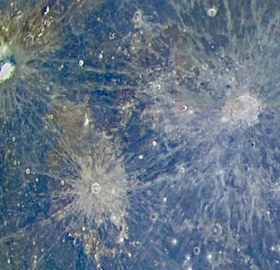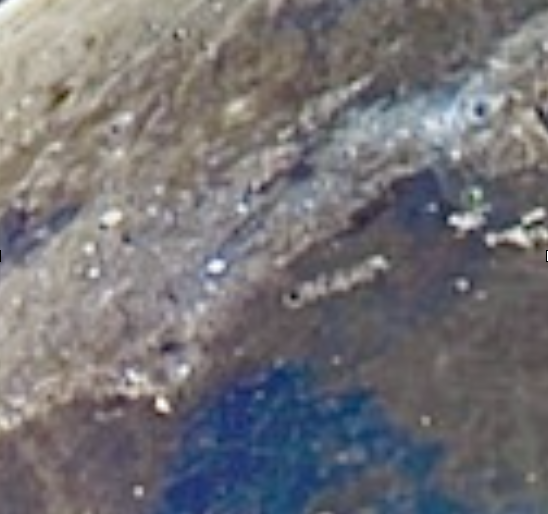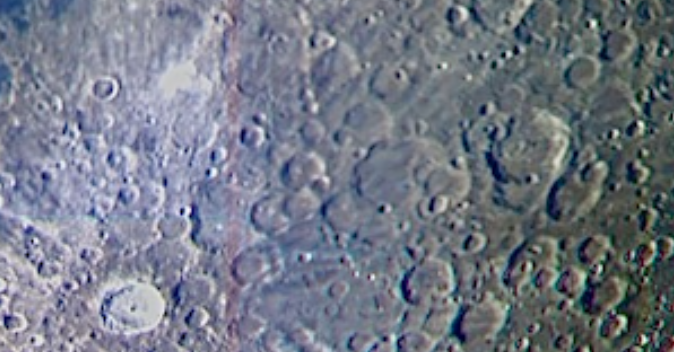Adrienne’s Astrophotography
1/30/23
The Moon and its Colors
For this moon mosaic, I originally put in an optical observation with the telescope NSO-17-CDK, but unfortunately, the observation did not come back in time for this post. Luckily, one of my group members, Christina Hollyday, submitted an observation using PROMPT-6, which did come back in time! In this observation, we used U, H⍺, and OIII filters in order to have a color picture of the moon as the final product. The U filter lets in borderline ultraviolet light, the H⍺ filter lets in red light, and the OIII filter lets in blue and green light. When all of these are stacked on top of each other, we get a full-color image of the moon! Before I was able to do that, we had to put in specific exposure durations for PROMPT-6. Because this is a moon mosaic and not just a picture of the entire moon, we had to request 9 images in each filter, because PROMPT-6 provided us with a 3 by 3 grid of the moon. After we got our observations back, I exported them to Afterglow, where I was able to tile the photos together. At first, there was one square missing from the mosaic, so I had to use a patch in order to have a full-color mosaic of the moon. I aligned and stacked each filter’s photos on Afterglow and then eventually stacked the 3 filters’ stacks on top of each other. After this, I labeled each filter with its corresponding color and I got my mosaic!
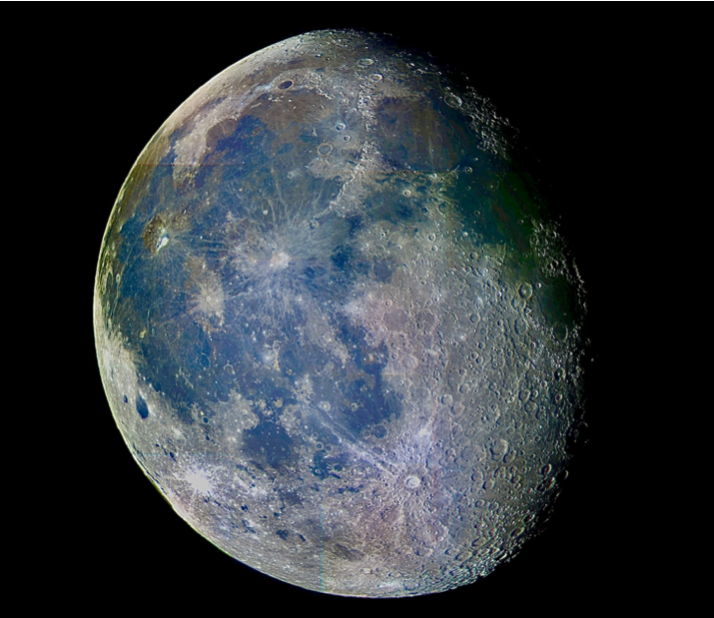
(also linked in my bio!)
Instagram: adrienne.astrophotography
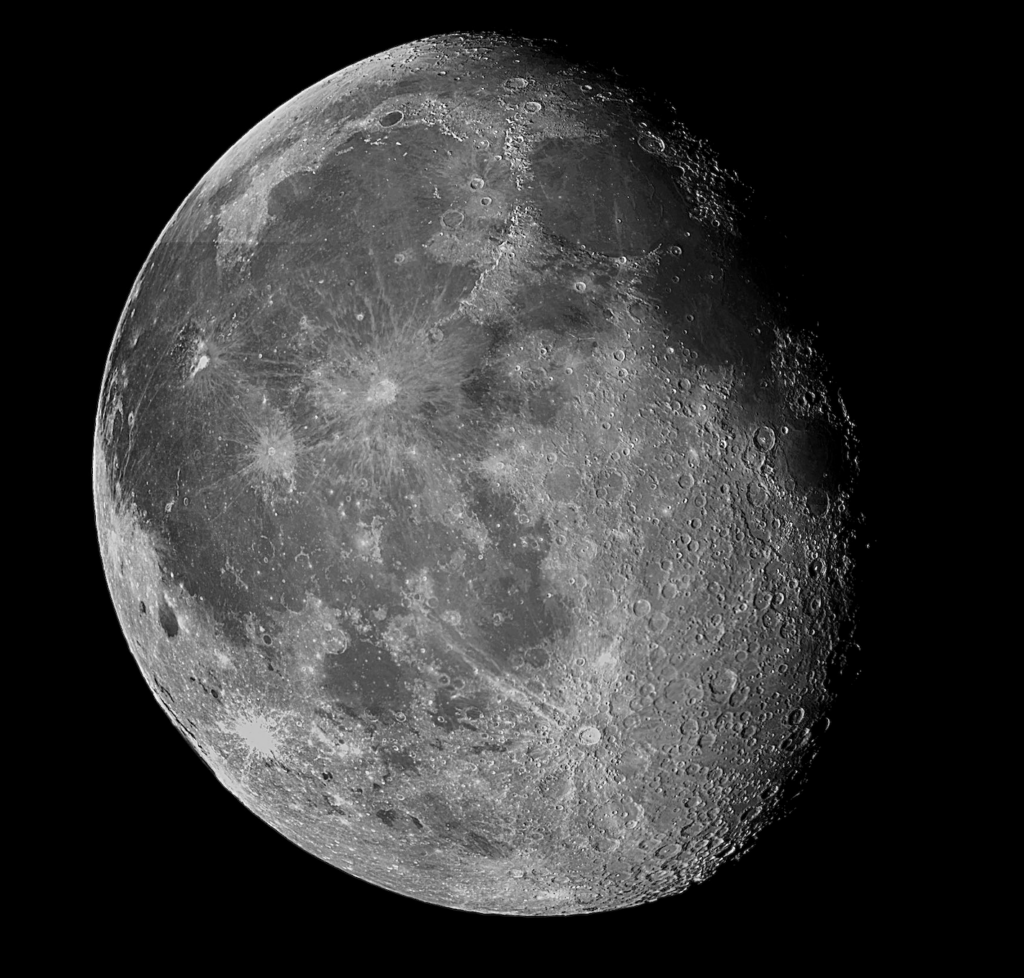
Although it was very exciting to see the original mosaic, in order to bring out the colors of the moon more vividly, I had to edit and enhance the photos. Most of the editing included sharpness and vibrance, however, I also used brilliance, highlights, shadows, and saturation as well. I did this by using the editor on photos on my computer and my phone. I have included the edited photo, and also a photo of the moon without color in it so you can really see the difference! While editing, it was difficult to not over-process the photo, as it was very tempting to make the colors even more vibrant and the craters even more defined. Although, in theory, both of those things sound like exactly what I was going for, I noticed that if I overdid it with the editing, the photo began to look over-processed!
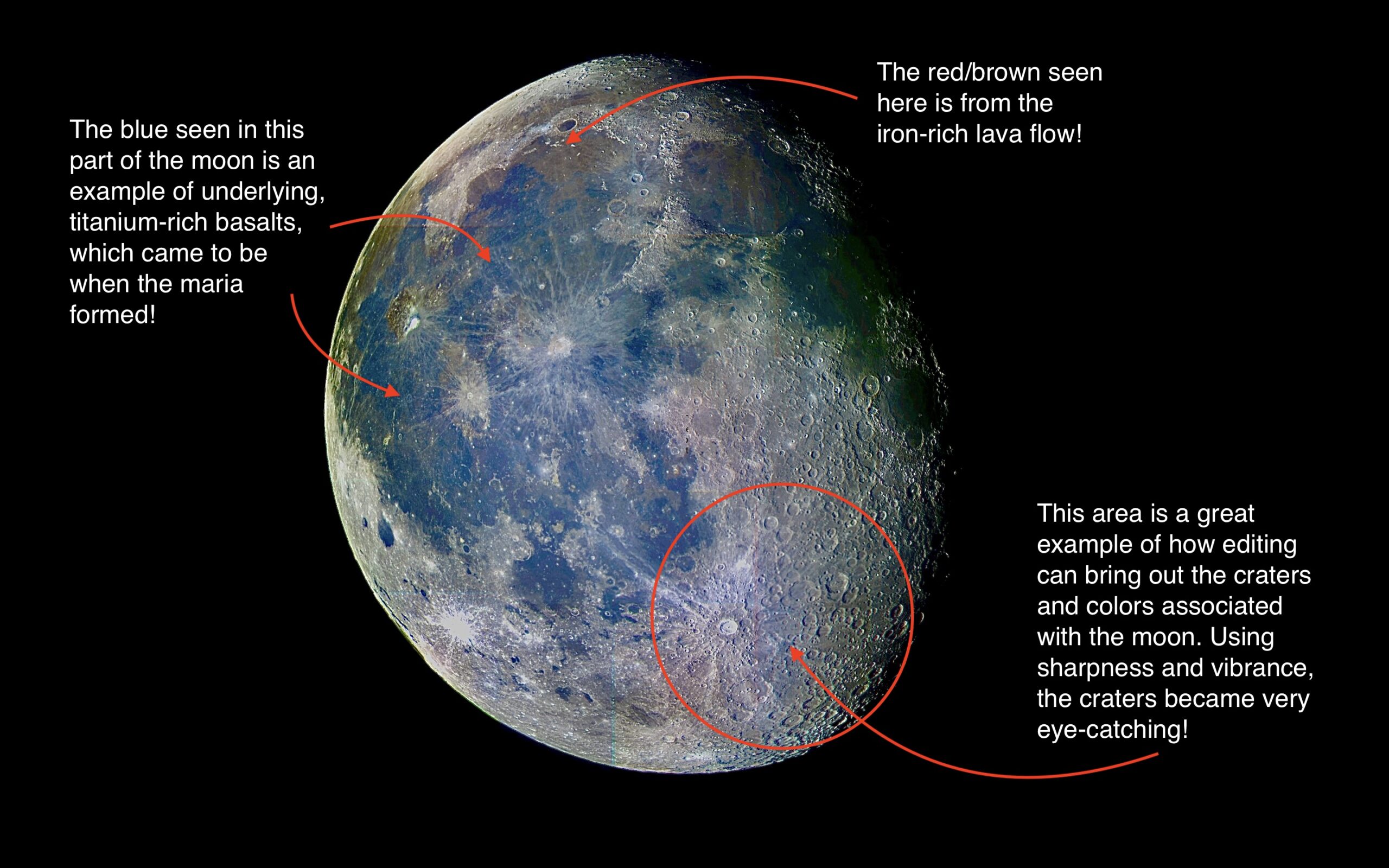
In the above diagram, the different colors found in the photo are described and where they come from is explained! The blue and red/brown regions were the most noticeable through editing the photo. In addition to this, the craters became much more noticeable through the editing process.
